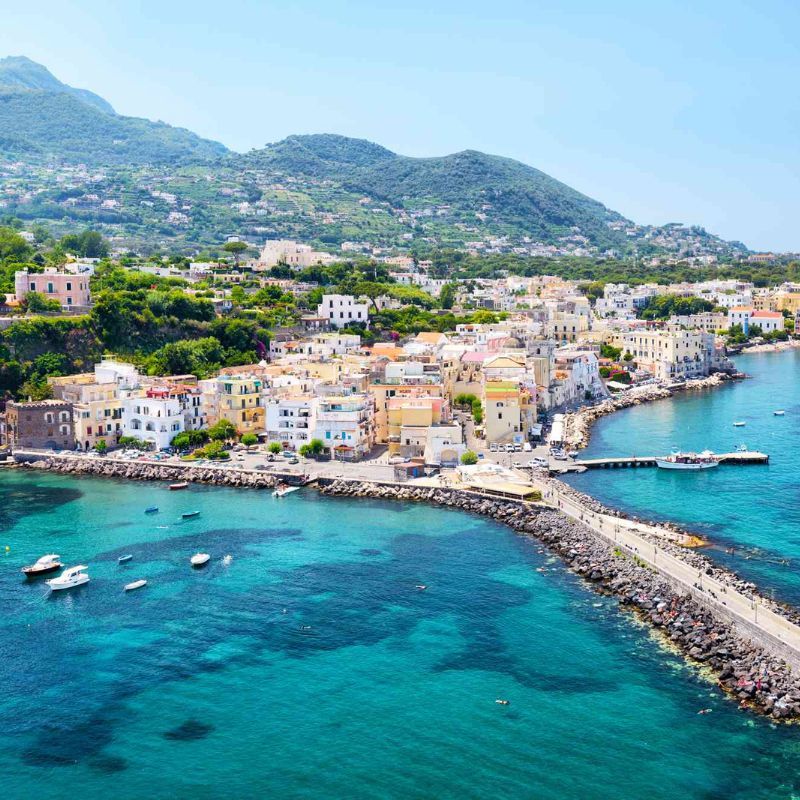
Walking on narrow cobbled streets, relishing the creamiest gelato while admiring the architectural beauty all around under a beautiful sky, is all that one dreams of on a trip to Europe. From admiring the Eiffel Tower sparkle at night in Paris, visiting ruin bars in Budapest and watching Flamenco in Spain to admiring magnificent cathedrals in Italy, every country in Europe tells a fascinating story from the past and offers experiences that attract travellers. But you can access all this only if you have a Schengen visa on your passport, which requires some planning before applying.
One must keep a buffer of four to eight weeks between the submission of documents and the application, and the day you intend to begin your journey. While the mandatory documents and the processing fee are the same for most nationalities, the only challenge can be that not all Schengen countries grant visas easily.
Embassies/consulates of countries like France, Spain and Germany can take months to issue visas due to the overwhelming number of applications they receive, and their rejection rates are also on the higher side. But there are some countries that most likely grant the visa and that too in a comparatively short duration due to fewer applicants.
So, if you are planning a European vacation and want your chances of getting a visa to be higher, we have listed the countries that may not disappoint you. But, first, here are the details on various aspects of the Schengen visa.
What is a Schengen visa and how much does it cost?

It is a visa for unrestricted movement between 27 European nations, which together make up the Schengen zone. It is granted to non-EU nationals and citizens of countries not having a visa-exempt agreement with Schengen members. The visa holders can stay in the zone for up to 90 days within a six-month period. The visa can be granted by any of the Schengen countries, depending on whose embassy or consulate or visa facilitation centre you approach. Some visa centres handle applications of multiple Schengen members.
The fee for a Schengen visa is EUR 80 (USD 90) for adults and EUR (USD 45) for children between the ages of six and twelve. There is no fee for children below six years. The visa fee for nationals from Armenia, Azerbaijan, Kosovo and Russia is USD 37 and nationals from Gambia have to pay USD 126.
Countries that are part of the Schengen zone
Austria, Belgium, Czech Republic, Croatia, Denmark, Estonia, Finland, France, Germany, Greece, Hungary, Iceland, Italy, Latvia, Liechtenstein, Lithuania, Luxembourg, Malta, Netherlands, Norway, Poland, Portugal, Slovakia, Slovenia, Spain, Sweden, and Switzerland.
Which country to apply to in case you are visiting more than one Schengen country
The application must be sent to the country you are visiting for the maximum number of days. In case you are spending an equal number of days in multiple countries, then you need to apply to the one you are beginning your trip from.
Countries you can apply to get a Schengen visa easily
The following list has been prepared as per European Commission Data 2021. Below, eight countries are listed on the basis of low refusal rates. It is pertinent to note that these countries receive fewer visa applications compared to popular destinations such as France, Spain or Germany.
1. Luxembourg
Luxembourg, a hidden gem in northern Europe, had the lowest rejection rate in 2021. So, there is a high possibility you may get the visa if your documents are in order.
- Applications received – 2,383
- Applications rejected – 1.2%
2. Slovakia
Known for its unique castles and caves, Slovakia was also among the ones which turned down very few visa applicants, as per 2021 data.
- Applications received – 3886
- Applications rejected – 2.7%
3. Lithuania
The country of Devil’s Pit won’t send your application to pit if you fulfil its visa requirements. This Baltic state, too, had a pretty low rejection rate.
- Applications received – 24,764
- Applications rejected – 2.8%
4. Czech Republic
Czech Republic or Czechia had a slightly higher rejection rate compared to the ones mentioned above, but this Central European country also received a higher number of applications.
- Applications received – 2,07,470
- Applications rejected – 3.3%
5. Latvia
Latvia is known for its UNESCO World Heritage Sites and unique cuisine. This Baltic country is also a good option for procuring a Schengen visa. Over 15,972 short-stay (90-day) visas were issued in 2021.
- Applications received – 16,764
- Applications rejected – 3.5%
6. Finland
The Nordic country, famous for being the ‘happiest country in the world’ for five years running, will make you happy too if you submit all the necessary documents.
- Applications received – 61,015
- Applications rejected – 4.7%
7. Hungary
With a marginal difference in the rejection rate from Finland, Hungary is also a good option for entering Europe. But don’t treat this country as only a gateway to the continent; there is a lot to do and see here.
- Applications received – 70,269
- Applications rejected – 4.8%
8. Estonia
Though quite low on this list, Estonia is still a better choice if compared to Western European countries such as France or Spain. Also, if you are a history buff, don’t even think about giving its capital Tallinn a miss.
- Applications received – 40,657
- Applications rejected – 5.4%
When to apply for the visa?
The embassy/consulate can take around 15 working days to process the application. Also, do not submit the application earlier than six months.
Important documents to attach to your application
The European Union has a visa-free policy for 61 countries, including the USA, Singapore, Canada and Australia, and Hong Kong and Macao (China’s special administrative regions). This means passport-holders of these countries and regions are not required to apply for a visa and can stay in the Schengen zone for less than 90 days. However, citizens of 108 countries, including India, Nepal, Sri Lanka, China, South Africa and the Philippines among others, need to apply for a visa. Countries such as Afghanistan, Bangladesh, Iran, Iraq, Nigeria, Somalia, Pakistan, Ghana, Ethiopia, Congo and Eritrea also require an airport transit visa if they enter the Schengen Zone during a layover.
If you belong to a country that requires a Schengen visa for a short stay, then continue reading to get details on the visa process. First, you need to find out whether the documents must be submitted at your destination country’s embassy or one of their consulates or a visa application centre appointed by the them to handle submissions. In case the destination country has no embassy/consulate or an appointed-visa centre in the region from where you are applying, then check if any other Schengen member is handling its operations.
Next, to initiate the visa process, you need to book an appointment online or in person at the embassy/consulate. Then, accordingly, submit your documents along with biometrics (fingerprinting and facial scan) and pay the visa fee. A travel agent can also be hired to do most of the leg work. In both cases, you have to ensure that you have attached all the required documents.
The documents you need for the visa can be divided into two categories: standard (mandatory for everyone) and visa-specific documents.
Below is the list of standard documents:
- Schengen visa application form.
- Two photographs in the dimension 34X44 mm (taken within the last three months).
- A valid passport that is not older than 10 years and has at least three to four months before it expires. Attach any other old passport that has visas on them.
- Round trip flight tickets along with travel itinerary and cover letter that mentions your intent of stay and purpose clearly.
- Travel insurance with a minimum coverage of EUR 30,000 (USD 32,299 – at the time of writing)
- Proof of accommodation — In case you are being hosted, then you need an invitation letter from the host.
- Proof of financial means – Evidence to show that you can support yourself financially during your stay in the Schengen country by sharing your bank statement. In case you are being supported by someone else, then attach the sponsorship letter along with their bank details. Bank statements should not be older than three months.
- Proof of visa fee paid.
- Employment details – Employment proof, salary slips, business license and Income Tax Return
Visa-specific documents depend upon the purpose and the type of visa a candidate is applying for. So, it is advised to first identify the type of visa you need and check out its requirements.
Types of visas
There are four main visa categories that you can apply for – A, B, C and D. Type A is a transit visa where citizens of non-Schengen states are allowed to transit through or wait for their connecting flight at the airport located in the Schengen country. Type B visa is for a short journey in the country that lasts for less than five days. Type C visa is a short-stay visa that allows you to stay in the Schengen area for less than 90 days over a period of 180 days. This category of visa is further divided into single entry visa, double entry visa and multiple entry visa.
- A single-entry visa allows its holder to be in the Schengen country only once. That means once you complete your duration of stay and exit, you cannot enter again.
- A double entry visa allows you to enter the Schengen country twice before the validity of the visa expires.
- Multiple entry visa gives the permission for you to enter the Schengen country as many times as you want.
Type D visa is for a long stay in the country and is mandatory for people who are willing to work, study or live in the Schengen country for longer than 90 days.
Other visa types include three different types of visas for multiple entry that are – one-year multiple entry visa, three-year multiple entry visa and five-year multiple entry visa. A Limited Territorial Visa is another type of visa that is generally issued in emergency cases when it is difficult to get a Schengen visa, and it only allows you to travel through one country.
From 2024, nationalities who do not need a visa to enter Schengen states will need to register with European Travel Information and Authorisation System (ETIAS) before travelling to Europe. Here’s all you need to know about ETIAS.
(All USD conversions done at the time of writing)
(Hero and feature image credit: An Mazhor/Shutterstock)
Related: Want Permanent Residency In The EU? These Countries Are The Easiest To Apply For
Frequently Asked Questions (FAQs)
Answer: The countries which are part of Schengen Zone give this visa. These countries are Austria, Belgium, Czech Republic, Croatia, Denmark, Estonia, Finland, France, Germany, Greece, Hungary, Iceland, Italy, Latvia, Liechtenstein, Lithuania, Luxembourg, Malta, Netherlands, Norway, Poland, Portugal, Slovakia, Slovenia, Spain, Sweden and Switzerland.
Answer: There are four main visa categories that you can apply for - A, B, C and D. Type A is a transit visa where citizens of non-Schengen states are allowed to transit through or wait for their connecting flight at the airport located in the Schengen country. Type B visa is for short journey in the country that lasts for less than five days. Type C visa is a short stay visa that allows you to stay in the Schengen area for less than 90 days over a period of 180 days. This category of visa is further divided into single entry visa, double entry visa and multiple entry visa. Type D visa is for a long stay in the country and is mandatory for people who are willing to work, study or live in the Schengen country for longer than 90 days.
Answer: The fee for a Schengen visa is EUR 80 (USD 90) for adults and EUR 40 (USD 45) for children between the ages of six and twelve. There is no fee for children below six years. The visa fee for citizens of Armenia, Azerbaijan, Kosovo and Russia is EUR 35 (USD 37), and for Gambians, it is EUR 120 (USD 126).
Answer: It is easy once you attach the required documents correctly.
Answer: Yes, you can apply for a Schengen visa for five years if you have used a multiple-entry visa previously for at least two years over the past three years.
Answer: The most common visa that is issued is a short stay visa which is for a period of less than 90 days over a period of 180 days.











